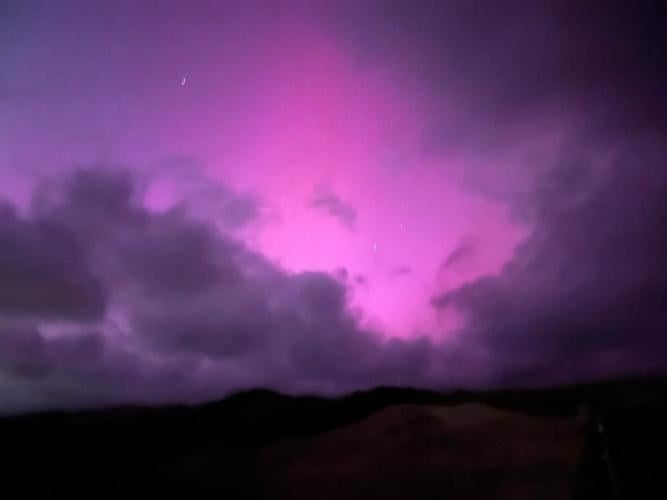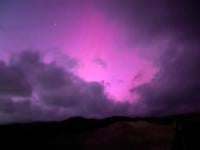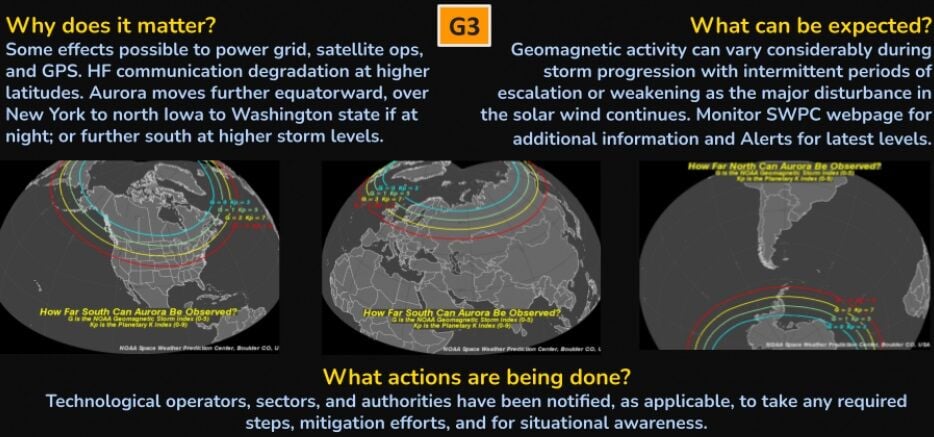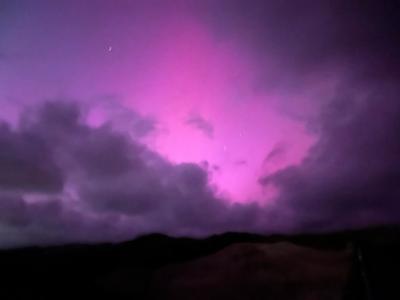A strong geomagnetic storm is underway, and it may give the D.C. area another chance to see the aurora borealis, or Northern Lights, tonight into early tomorrow.
The National Oceanic and Atmospheric Administration Space Weather Prediction Center says the aurora may dip as far south as Northern Virginia this evening through Friday morning.
A large sunspot cluster produced a coronal mass ejection, known as a CME, that arrived at Earth at 11:15 a.m., traveling nearly 1.5 million miles per hour, NOAA said on its website.
"The CME strength and structure are being closely scrutinized for potential geomagnetic storm intensity, but, G3 levels are now expected due to the magnitude and potential of the CME, therefore G3 or greater warning has been issued," NOAA's forecast said. "G4 (Severe) levels remain likely with the watch still in effect and even a slight chance of G5 (Extreme) levels due to initial observations of the CME strength."
CMEs are explosions of plasma and magnetic fields from the sun’s corona and they cause geomagnetic storms when they are directed at Earth, NOAA says.

The Northern Lights may be visible over Northern Virginia again late Oct. 10 into early Oct. 11.
"Geomagnetic storms can impact infrastructure in near-Earth orbit and on Earth’s surface, potentially disrupting communications, the electric power grid, navigation, radio and satellite operations," NOAA said.
Geomagnetic storms can also trigger spectacular displays of aurora on Earth, and while there is no real way to predict when they might be visible, tonight the possibility is there from sunset through 2 a.m. Friday.
Aurora forecasts are based on a geomagnetic measure called the Kp index. For Northern Lights to be visible in the D.C. area, the Kp index needs to be between 7 and 9. You can follow the latest Kp index at the University of Alaska Geophysical Institute, and see a map of predicted aurora activity at the NOAA's Space Weather Prediction Center.
The institute predicts the Kp index to reach 8 between 5 p.m. today and 2 a.m. Friday. Dark skies are best to view the phenomena.
In May, another powerful solar storm brought the aurora as far south as Texas and Florida and the lights were visible along much of the East Coast.
A severe geomagnetic storm late Friday brought the Northern Lights as far south as Florida, …








(0) comments
Welcome to the discussion.
Log In
Keep it Clean. Please avoid obscene, vulgar, lewd, racist or sexually-oriented language.
PLEASE TURN OFF YOUR CAPS LOCK.
Don't Threaten. Threats of harming another person will not be tolerated.
Be Truthful. Don't knowingly lie about anyone or anything.
Be Nice. No racism, sexism or any sort of -ism that is degrading to another person.
Be Proactive. Use the 'Report' link on each comment to let us know of abusive posts.
Share with Us. We'd love to hear eyewitness accounts, the history behind an article.